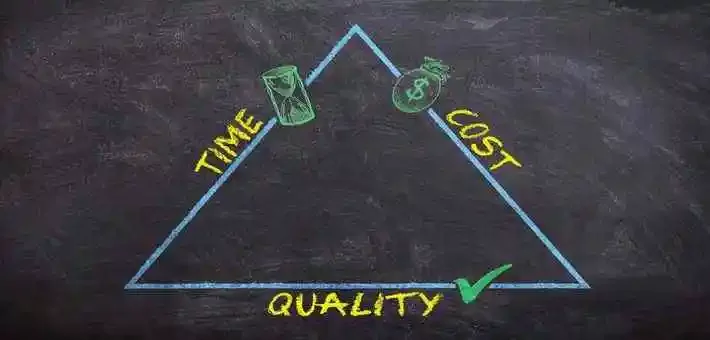More MCQs
Cost and Management accounting MCQs
Introduction to costing and performance measurement MCQs
Classification of Cost MCQs
Accounting for Materials MCQs
» Inventory Accounting MCQs
» Inventory Management MCQs
Job, Batch, Service costing MCQs
Marginal cost and Absorption costing MCQs
Overhead Accounting MCQs
Process Costing MCQs
Standard Costing MCQs
Variance Analysis MCQs
Process Costing MCQs
Process costing provides a system of costing where the output is continually produced from the manufacturing process. Materials might be added in full at the start of a process or might be added gradually throughout the process. Here on MCQs.club we have designed Multiple-Choice Questions (MCQs) that covers the system/meaning/definition/accounting/ method/format/types/steps of process costing. Our MCQs are useful for accounting and competitive exams.
- Process costing provides a system of costing where the following characteristics occur. Identify which of the following are correct:
- Output is continually produced from the manufacturing process. Materials might be added in full at the start of a process or might be added gradually throughout the process.
- There might be losses in the process. Process costing provides a method of measuring and costing incomplete WIP.
- When more than one product is output, they might be called joint products or a by-product, depending upon the relative value of the products. Process costing offers methods of costing each of the different products.
- All of the above are correct
- Process costing is used when output is produced in a continuous process system, and it is difficult to separate individual units of output.
- True
- False
- Examples of manufacturing where process costing is used include:
- Chemicals manufacture, Petroleum refining, the manufacture of liquids
- The continuous processing of high volumes of low-cost food items such as tins of peas or beans, or bottles of tomato ketchup.
- Both A&B
- None
- The task that sits at the heart of process costing is always to allocate the costs collected on the debit side of the account to the possible outputs (good output, closing WIP and lost units) on the credit side.
- The above statement is correct
- The above statement is incorrect
- In process costing questions, you will need to:
- Identify the losses and output
- Calculate the cost of good output, losses and WIP
- Use the costs you have calculated to assign values to the good output, losses and WIP
- All of the above
- It is possible to have abnormal loss and abnormal gain on the same process account in the same period.
- False
- True
- In a process costing system loss might be:
- Normal
- Abnormal
- Both A&B
- None
- Normal loss is usually expressed as a percentage of the input units of materials.
- Correct
- Incorrect
- Normal loss is ___________in the normal course of events. It is inherent in the physical and chemical reactions that take place in a process.
- Avoidable
- Unavoidable
- The normal loss is something that is unavoidable in order to get the good output. The cost of the lost units is part of the cost of obtaining the good output.
- True
- False
- Normal loss comes with:
- No recovery/scrape value
- Recovery/scrape value
- Either A or B
- None
- If the normal loss has no scrap value it is given a nil value.
- False
- True
- If normal loss has a scrap value the company is able to recover some of the input costs to the process. The scrap value reduces the cost of the process.
- The above statement is correct
- The above statement is incorrect
- In some cases, a company might have to pay to dispose of losses in a process. The cost of disposal represents an additional cost to the process. To reflect this in the process account the normal loss is measured at zero but the expected costs of disposal are debited to the process account.
- The above statement is incorrect
- The above statement is correct
- The disposal cost of abnormal loss is included in the abnormal loss account and therefore in the transfer of the cost of abnormal loss to the statement of profit or loss.
- True
- False
- When actual loss exceeds normal loss, there is:
- Abnormal loss
- Abnormal gain
- Extra loss
- None
- The difference between total actual loss and normal loss is abnormal loss.
- Incorrect
- Correct
- If it is assumed that all losses in process occur at the end of the process, units of abnormal loss are costed in exactly the same way in the as units of finished output.
- True
- False
- The cost of abnormal loss is built into inventory.
- False
- True
- The cost of units of abnormal loss is treated as an _________ for the period, and charged as an ___________for the period
- Product cost, inventory cost
- Expense, expense in the income statement
- Extra cost, suspense cost
- None
- Abnormal loss comes with:
- No recovery/scrape value
- Recovery/scrape value
- Either A or B
- None
- When the abnormal has a scrape value the net cost of abnormal loss (cost of abnormal loss minus its scrap value) is then transferred as a cost to the cost accounting income statement at the end of the accounting period.
- The above statement is correct
- The above statement is incorrect
- When actual loss is less than the expected (normal) loss there is:
- Extra ordinary loss
- Abnormal loss
- Abnormal gain
- None
- Identify which of the following statement is correct.
- Abnormal gain is a benefit rather than a cost. Whereas abnormal loss is written off as a cost at the end of the financial period.
- Abnormal gain is an adjustment that increases the profit for the period.
- Abnormal gain is recorded as a debit entry in the process account, because it is a benefit.
- All of the above are correct
- When there is closing work in progress (WIP) the concept of _________ is used.
- Equivalent units
- Expected units
- Fair allocated units
- None
- An equivalent unit means ‘equal to one finished unit of output’.
- False
- True
- When there is closing work in progress, costs are shared between finished units and inventory by calculating a cost per equivalent unit.
- True
- False
- When there is opening work in progress there are two types of cost on the debit side of the account. These are the costs that were incurred last period and brought forward as work in progress and the costs that were incurred in the current period.
- The above statement is correct
- The above statement is incorrect
- Are the costs of opening WIP, incurred in last period and brought forward as work in progress and the costs that were incurred in the current period, treated the same way?
- Yes, treated together
- Treated Separately
- This question is addressed in the accounting policy adopted for opening work in progress.
- None
- The weighted average cost method for process costing with opening WIP can be summarised as follows.
- All output and closing inventory are valued at the same cost per equivalent unit
- Cost of opening inventory + Costs in the period = Total costs
- Units of closing inventory + Units of output in the period = Total equivalent units
- Cost per equivalent unit = Total costs/Total equivalent units
- All of above is correct
- Only () and (IV) are correct
- Only (IV) is correct
- None
- Joint products are two or more products generated simultaneously, by a single manufacturing process using common input, and being substantially equal in value.
- The above statement is correct
- The above statement is incorrect
- In order to calculate a cost for each joint product, the common costs must be ________ between the joint products.
- Identified
- Allocated
- Apportioned
- None
- Which of the methods of apportionment is normally used for apportioning common costs between joint products?
- Units basis
- Sales value at the split-off point basis
- Net realizable value
- Either of the above
- In Units basis, Common costs are apportioned between joint products on the basis of the total number of units produced. The cost per unit is the same for all the joint products. (This is also described as the physical quantities basis).
- Correct
- Incorrect
- The units basis has the following limitations.
- Where the products separate during the processes into different states, for example where one product is a gas and another is a liquid, this method is unsuitable.
- This method does not take into account the relative income-earning potentials of the individual products, with the result that one product might appear very profitable and another appears to be incurring losses.
- Both A&B
- None
- The relative sales value method is the most widely used method of apportioning joint costs because (ignoring the effect of further processing costs) it assumes that all products achieve the same profit margin.
- True
- False
- By products are outputs from a joint process that are relatively minor in quantity and/or value.
- False
- True
- How are the sales proceeds from by-products treated?
- As revenue (adding it to the revenue from sales of other products)
- As other income
- As a deduction from joint process costs (this is the most commonly used method)
- Either of the above
- Since a by-product does not have any substantial value, there is no sense in charging it with a share of the common processing costs.
- False
- True
- Which of the following statement is correct?
- A joint product is regarded as an important sale-able item, and so it should be separately costed. The profitability of each joint product should be assessed in the cost accounts.
- A by-product is not important as a sale-able item, and whatever revenue it earns is a ‘bonus’ for the organisation. Because of their relative insignificance, by-products are not separately costed.
- Both A&B are correct
- None
- The point at which joint products and by-products become separately identifiable is known as:
- The split off point
- Separation point
- Either A or B
- None




